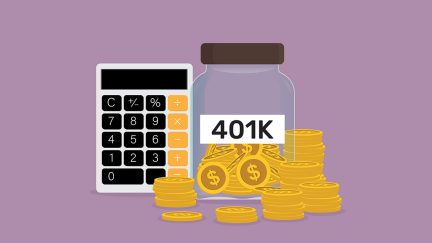For more stories like this, sign up for the PLANADVISERdash daily newsletter.
Americans on Track to Replace 64% of Income in Retirement
Participants who work with a traditional or online adviser are on track to replace 116% of their income. Those working with any paid adviser, 91%, and those with no adviser, 51%.
Americans are on track to replace 64% of their income in retirement, according to a report from Empower titled, “Scoring the Progress of Retirement Savers.” This figure includes projected Social Security benefits, both defined benefit (DB) and defined contribution (DC) plan assets, personal savings, home equity and business ownership.
Asked what source will provide income for their household in the first five years of retirement, 71% said Social Security, 56% said their DC plan, 38% said personal savings, 29% said employment, and 19% said a DB plan.
Sixty-seven percent said at least one earner has a workplace retirement plan available to them, but 33% said they are not offered a plan. Among those with a plan, they are on track to replace 79% of their income; for those without one, the figure is 45%. “Clearly, providing access to a tax-deferred retirement savings plan is one of the most important first steps any employer can take to put people on the path to future security,” Empower says.
Younger workers are on track to replace a higher percentage of their income, most likely because they have had access to a workplace retirement plan for their full career, whereas early Baby Boomers did not. Thus, Millennials are on track to replace 75% of their income; Gen X, 61%; late Boomers, 61%; and early Boomers, 55%. Men are on track to replace 71% of their income in retirement, and women, 59%.
Those who are contributing less than 3% to a retirement plan are on track to replace 59% of their income in retirement, whereas those who contribute 10% or more are on track to replace 128% of their income. Additionally, when a DC plan includes auto escalation, participants are on track to replace 107% of their income.
Among those with a retirement plan, 79% are confident they are making the most of the plan to build retirement income, up from 70% in 2016. Empower says it is important for employers to educate participants about how much income their savings is projected to supply them with.
Thirty-two percent of participants said they would increase contributions to their retirement plan if they paid down the debt they owe. Another 22% said they would increase contributions if they received a raise, 12% if they reduced their spending, 10% if they achieved the maximum employer match, and 5% if they learned what their peers are contributing.
Participants who work with a traditional or online adviser are on track to replace 116% of their income. Those working with any paid adviser, 91%, and those with no adviser, 51%.
Empower’s findings are based on a survey of 4,038 adults between the ages of 18 and 65, conducted in conjunction with NMG Consulting last December and January. The full report can be downloaded here.You Might Also Like:

Senate Committee Debates Social Security Funding Proposal

Auto-Features Offer Advantages for Plan Participants, Employers

Do Retirement Portfolios Need ‘Protected’ Income?
« Employees Need Help Addressing Barriers to Retirement Saving